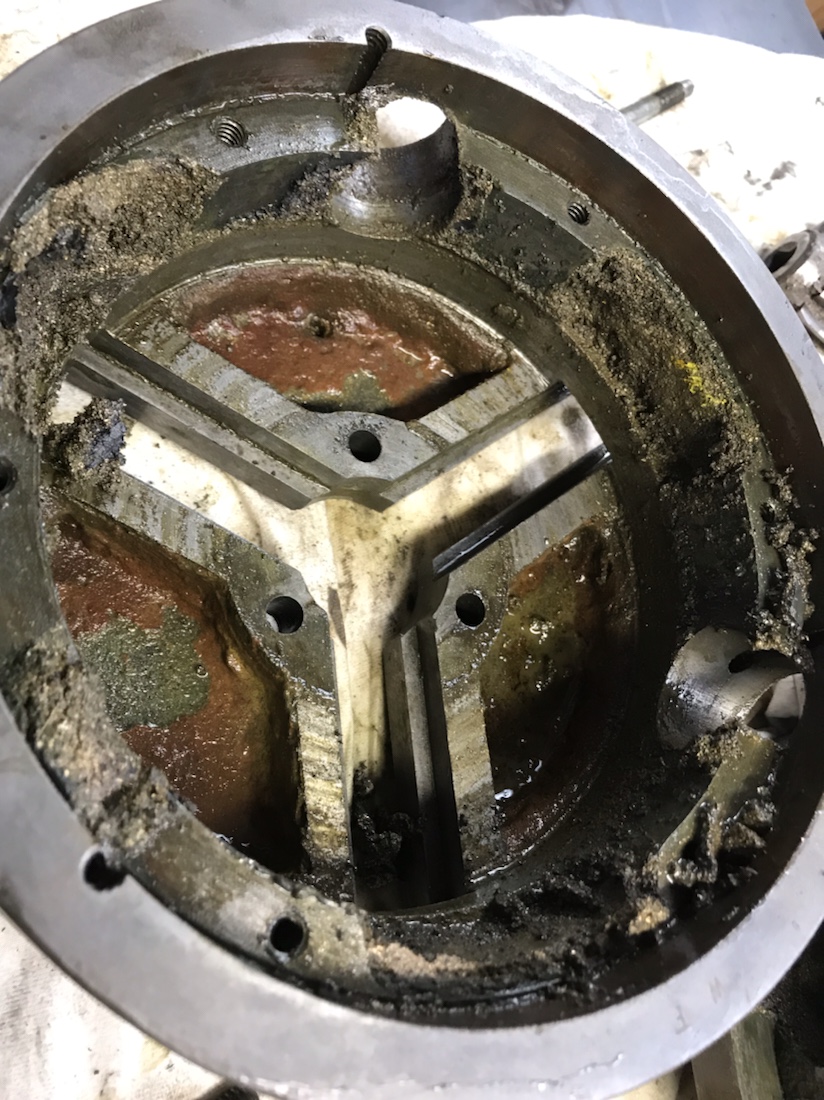bytewise
Cast Iron
- Joined
- Dec 13, 2007
- Location
- Wappingers Falls NY
I have an old 3 jaw chuck that came with my Atlas lathe. It is seriously out of balance, but otherwise working OK. I decided to see if I could improve it. First I tried to take it apart. I have taken several other 3 jaw chucks apart previously without any problem.
This chuck is 6 1/2 inch dia. made by Westcott Chuck Co, Oneida NY.
After removing the six screws around the outer edge of the back side and 3 screws from near the center of the front side, I tried to separate the layers. It appears that something is still holding on the side where the single adjustment gear is located. Also, after removing a round label on the face near the input gear, I found a hole. There are no obvious threads in the hole. The bottom of the hole seems to be the shape of a drill point. There is no sign of a hex socket or slot.
I wonder if this hole contains a lock pin to retain the input adj.gear?
The layers separate very slightly and then hang.
Does anyone have any information about this particular chuck?
I would appreciate any suggestions or ideas.
Thanks, Hugh
This chuck is 6 1/2 inch dia. made by Westcott Chuck Co, Oneida NY.
After removing the six screws around the outer edge of the back side and 3 screws from near the center of the front side, I tried to separate the layers. It appears that something is still holding on the side where the single adjustment gear is located. Also, after removing a round label on the face near the input gear, I found a hole. There are no obvious threads in the hole. The bottom of the hole seems to be the shape of a drill point. There is no sign of a hex socket or slot.
I wonder if this hole contains a lock pin to retain the input adj.gear?
The layers separate very slightly and then hang.
Does anyone have any information about this particular chuck?
I would appreciate any suggestions or ideas.
Thanks, Hugh





